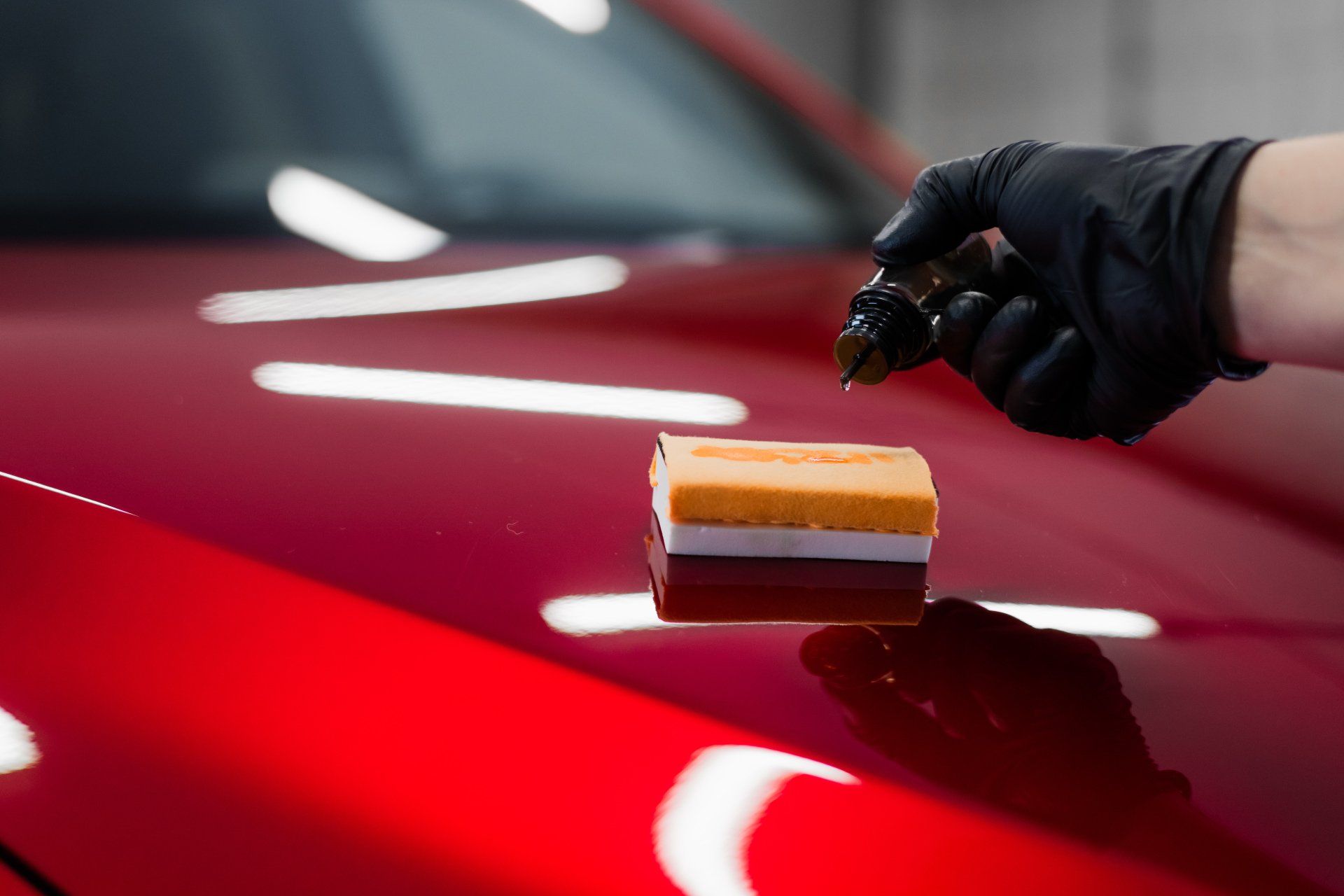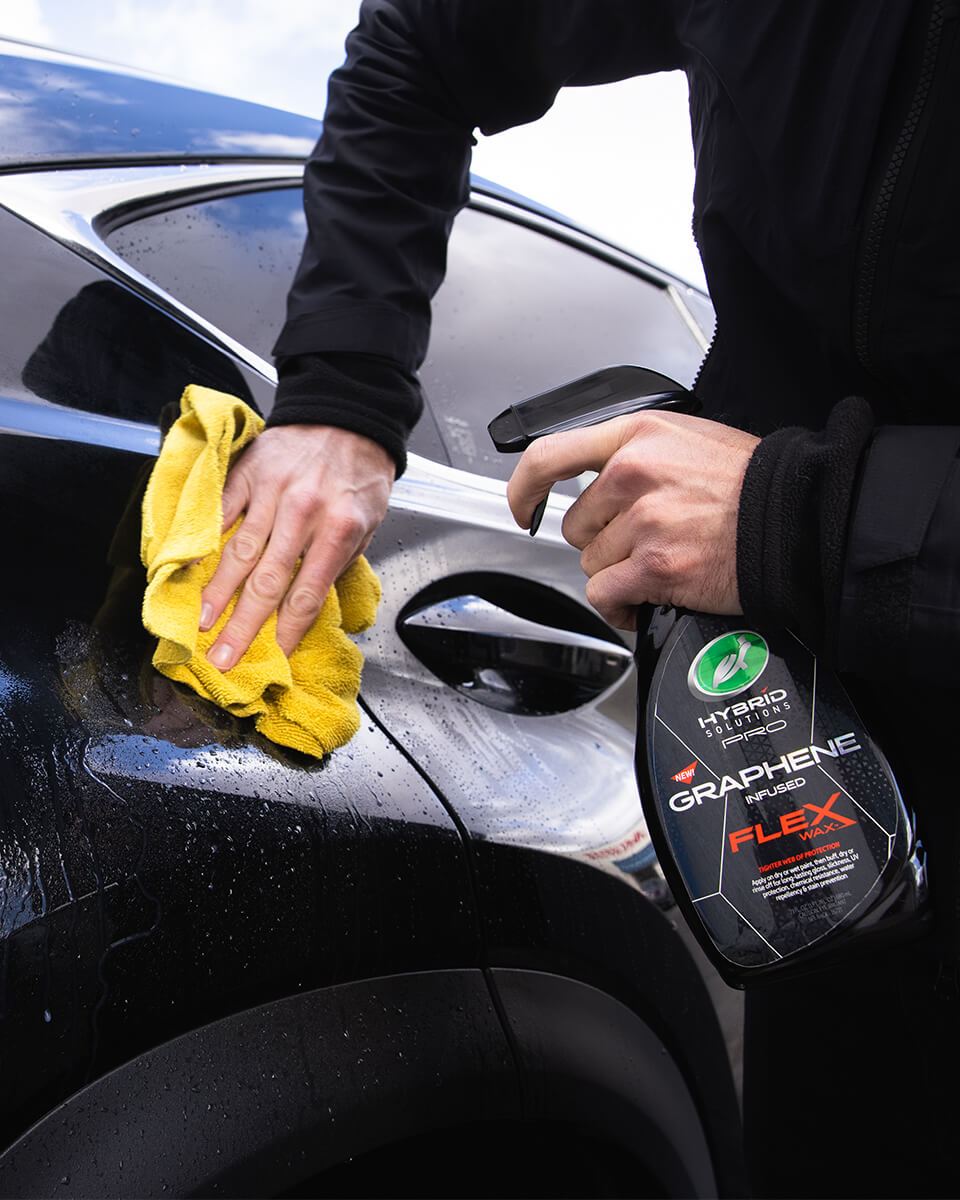Why Ceramic Coating Newark is a wise investment for car owners
Wiki Article
Exploring the Scientific Research Behind Car Ceramic Coating and Its Safety Qualities
The science of car ceramic coating offers an interesting research study in advanced automobile defense. Made up primarily of silicon dioxide and polymers, these finishes create a robust bond with car paint. This communication improves sturdiness versus ecological dangers while supplying hydrophobic advantages. Nevertheless, the details of just how these coatings work and their long-lasting advantages continue to be less comprehended. Unpacking these details reveals why ceramic finishings are coming to be a preferred selection for car careWhat Is Ceramic Coating?
Ceramic coating is a fluid polymer that chemically bonds to the surface area of a car's paint. This sophisticated protective layer boosts toughness and supplies remarkable resistance to ecological elements. Unlike standard wax or sealants, which supply momentary protection, ceramic coverings create a resilient shield that can stand up to rough problems such as UV rays, acidic impurities, and extreme weather condition. When applied appropriately, the coating creates a hydrophobic surface, causing water to grain and slide off, which helps in maintaining the vehicle's tidiness. In addition, it provides enhanced gloss and deepness to the paint, making the car show up more sleek and dynamic. The application procedure typically entails comprehensive surface area preparation, including cleaning and polishing, to guarantee peak bonding. As an outcome, ceramic layers are becoming progressively prominent among car fanatics and those looking for to shield their investments, promising to maintain the lorry's visual allure while decreasing the frequency of maintenance.The Make-up of Ceramic Coatings
The detailed formula of ceramic finishings largely consists of silicon dioxide (SiO2), which is originated from natural resources like quartz and sand. This vital component gives the structure for the coating's longevity and safety qualities. Along with SiO2, ceramic layers often include different polymers and ingredients that boost bond, adaptability, and resistance to ecological elements. These compounds function synergistically to produce a durable obstacle versus pollutants such as dust, chemicals, and UV rays.Furthermore, some formulations integrate titanium dioxide (TiO2) or various other nanomaterials, which can increase the coating's hydrophobic buildings, causing improved water repellency. The precise structure can vary significantly amongst makers, influencing performance and longevity. Eventually, the combination of these components culminates in a safety layer that not only improves the aesthetic charm of lorries but also offers to lengthen their lifespan by securing the surface area from potential damages.Just How Ceramic Coatings Job
Comprehending just how ceramic coatings function involves discovering their chemical structure, which adds to their safety high qualities. The application process is important for accomplishing optimal results, while long life and durability factors establish the coating's performance gradually. Together, these elements highlight the advantages and performance of ceramic coatings for automobile protection.Chemical Make-up Explained
While many car proprietors look for durable defense for their vehicles, the chemical structure of ceramic layers plays a vital duty in their efficiency. These coverings primarily consist of silicon dioxide (SiO2), which is stemmed from natural minerals. This compound develops a solid bond with the car's paint, producing a long lasting, protective layer. Furthermore, numerous ceramic coverings contain titanium dioxide (TiO2), improving their hydrophobic residential properties and resistance to UV rays. The visibility of polysiloxanes can additionally boost versatility and sturdiness. Together, these elements add to the coating's capability to fend off water, dirt, and pollutants, while additionally offering a high-gloss coating. Comprehending this chemical structure helps car proprietors appreciate the robust security provided by ceramic finishings.Application Process Introduction
Using ceramic finishings involves a thorough procedure that guarantees suitable bonding and protection for the vehicle's surface area. Comprehensive cleansing and purification of the car's outside are done to get rid of dirt, gunk, and previous waxes. This step confirms that the surface area is devoid of contaminations that could hinder adhesion. Following this, the paint is commonly brightened to improve clearness and remove any flaws. As soon as prepared, the ceramic coating is used in small areas utilizing an applicator pad, permitting consistent protection. The coating is after that delegated treat, developing a strong chemical bond with the surface. Correct curing times and problems are vital, as they validate the coating attains its maximum effectiveness and safety top qualities.Long Life and Longevity Elements
Ceramic coatings are created to supply resilient defense via their sophisticated chemical structure, which creates a robust obstacle versus environmental contaminants. The resilience of these coverings is influenced by aspects such as the density of the application, the high quality of the product, and the conditions under which the car is subjected. Top quality ceramic finishings can last a number of years, resisting scratches, UV rays, and chemical discolorations. Appropriate upkeep, consisting of regular cleaning and periodic reapplication, can better enhance durability. Furthermore, ecological elements like environment and exposure to toxins can affect the life expectancy of the coating. Overall, when applied and kept appropriately, ceramic YOURURL.com finishes use remarkable sturdiness, making them a popular selection for car enthusiasts seeking to protect their car's look.Hydrophobic Properties and Water Repellency
Hydrophobic properties are a characteristic of quality car ceramic coverings, significantly improving the lorry's surface efficiency. These finishings produce a molecular bond with the car's paint, leading to a surface area that pushes back water efficiently. When water enters contact with a ceramic-coated surface area, it beads up and rolls off, lessening the amount of liquid that stays on the paint. This habits not only adds to an aesthetically pleasing look however also reduces the build-up of pollutants such as dust, gunk, and road salts.The improved water repellency causes easier cleaning and upkeep, as less effort is required to remove unwanted materials. Furthermore, the hydrophobic nature of ceramic coatings helps in stopping water areas, which can mar the surface of uncoated surface areas. In general, the unification of hydrophobic residential or commercial properties in ceramic finishings plays an important function in maintaining the car's immaculate appearance while streamlining upkeep.Protection Against Scratches and UV Damages
Car ceramic finishings use considerable defense against scratches and UV damage. The scrape resistance device develops a sturdy layer that absorbs impacts, while the UV securing advantages assist keep the car's paint integrity over time. With each other, these functions add to a longer-lasting and visually enticing surface.Scrape Resistance Device
Making use of innovative modern technology, ceramic coverings provide a durable guard against scratches and UV damage, improving the longevity and appearance of lorry surface areas. The scratch resistance device of these layers is credited to their unique molecular framework, which creates a resilient bond with the vehicle's paint. This bond produces a hard, safety layer that can soak up effects and withstand abrasions. Furthermore, the smooth surface of the coating decreases rubbing, making it challenging for pollutants to adhere and trigger scratches. The chemical make-up of ceramic coverings frequently includes nanoparticles that strengthen the safety layer, more enhancing its strength. Lorries treated with ceramic finishings show significantly boosted scrape resistance contrasted to standard wax or sealants, ensuring a beautiful finish over time.UV Protecting Perks
The protective high qualities of ceramic finishings expand beyond scrape resistance to consist of significant UV shielding advantages. These coverings produce a robust barrier that shows unsafe ultraviolet rays, safeguarding the lorry's paint and underlying products. Long term direct exposure to UV radiation can bring about fading, oxidation, and degeneration of the paint finish. By integrating ceramic coatings, automobile proprietors can effectively mitigate these threats, maintaining the visual appeal and honesty of their cars. In addition, the UV blocking residential or commercial properties add to improved durability, reducing the frequency of painting and maintenance. Inevitably, the combination of ceramic layers uses a comprehensive remedy for safeguarding vehicles from the harmful results of sun exposure, guaranteeing a continual, lively look with time.The Durability and Maintenance of Ceramic Coatings

Often Asked Inquiries
Can Ceramic Coating Be Applied to Any Type of Automobile?
Ceramic coating can be used to various kinds of lorries, consisting of automobiles, trucks, and motorbikes. Surface prep work and compatibility with particular products are vital for excellent adhesion and performance of the coating.Just How Much Does Ceramic Coating Normally Price?
Ceramic coating commonly sets you back between $500 and $2,000, depending upon variables such as automobile dimension, coating high quality, and expert application. The financial investment can offer durable defense and boost the vehicle's appearance with time.
Is Professional Application Needed for Ideal Outcomes?
The requirement of professional application usually depends upon desired results. Experts generally ensure appropriate surface area prep work and application methods, resulting in optimal bonding and longevity of the coating, which might be challenging for unskilled individuals to accomplish.Can Porcelain Coatings Be Eliminated or Repaired?
Ceramic finishes can be removed or fixed, though the process may require details solvents or techniques - Ceramic Coating Newark. Correct elimination is vital to prevent damages to the underlying surface area, stressing the importance of professional help for ideal outcomesHow Does Ceramic Coating Compare to Typical Wax?
The comparison in between ceramic coating and traditional wax reveals that ceramic finishes provide remarkable resilience, enhanced protection against ecological pollutants, and longer-lasting luster, while wax calls for a lot more constant application and supplies much less total resistance to damages.Report this wiki page